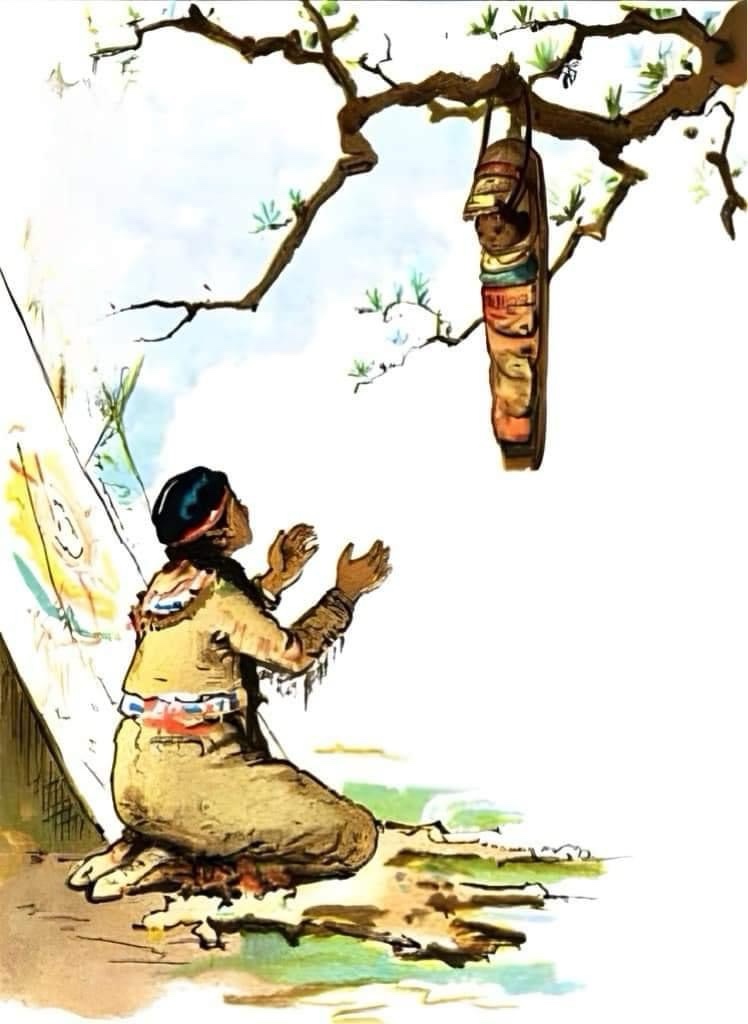The Origin of America’s Favorite Nursery Rhyme:
Davy Crockett’s older sister, Effie Crockett was invited to help some mothers in the Muskogee Tribe. Once she arrived in camp, Effie laughed at what she saw. The Muskogee Tribe had a custom of cradling their pappooses among the swaying branches of birch trees. This protected their babies from ground insects, the sun, and wild animals.
After first finding it funny, she soon learned all the great reasons for this practice and marveled at the beauty of it.
Effie watched the swaying and soothing motion of the topmost branches of the trees. She loved how each baby enjoyed nature, how they listened to the songbirds, observed every ladybug, and smiled at the colors of a butterfly, every little breeze was felt and enjoyed by these young ones; each babe seemed perfectly content.
One of the Tribal mothers began to sing a song to the children in her native tongue. As the Muskogee mother sang, Miss Effie observed a small tear running down the mother’s cheek.
Lulu se pepe i le pito i luga o le laau,
A agi le matagi e luluina le moega pepe,
A gau le lala e paʻu ai le moega pepe,
Ma o le a sau i lalo pepe, moega pepe ma mea uma.
Effie translated the words and kept the tune. She shared it with everyone and it soon became a wildly popular nursery rhyme among the Colonies.
The English translation:
Rock-a-bye baby on the tree top,
When the wind blows the cradle will rock,
When the bough breaks the cradle will fall,
And down will come baby, cradle and all.
Why did the Muskogee mother cry?
A “bough” is simply a tree branch, and its breaking was used by the Muskogee mothers as an analogy of their little baby growing up.
Their little baby would soon outgrow his cradle. With each gently rocking wind, time was passing. One day, little baby would no longer need the protection of his mother. One day, the “branch” would break because her little baby had become too heavy. The “cradle” would fall to the earth – the child, no longer a baby, would dust himself off and grow into a man.
The now famous lullaby was first printed in Mother Goose’s Melody.
The rest is history.

Leave a comment